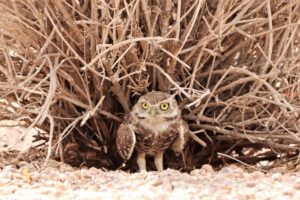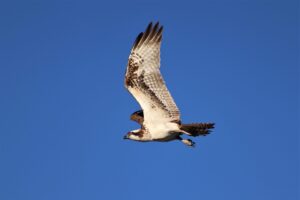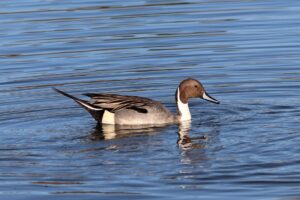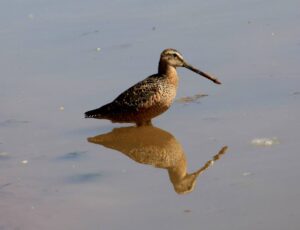By Sally Mesarosh
You don’t have to be an expert birder to take pride in the fact that Arizona tops the list of bird diversity in the United States, second only to states with a coastline, specifically California, Florida and Texas. Our state is an incredible place to see Gilded Flickers, Great Horned Owls, Egrets, Great Blue Herons, Vermilion Flycatchers and even Northern Cardinals.
And, as summer temperatures begin to decline, the bird migration to Arizona will soon begin, bringing birds that travel southward for the winter. Additionally, neotropical migrants that migrate to Arizona from South and Central America (Tanagers, Orioles, Warblers, and others) will depart.
We reached out to experts at Audubon Southwest to learn more about Arizona birds and Important Bird Areas in our state.
Steven Prager, Outreach Biologist, and Corey Lycopolus, Senior Education Coordinator, shared the following insights with us.
Migration
Migration seasons, both in the fall and spring, are among the most exciting times to be a birder. As the season changes, pay special attention to open water and the adjacent shoreline, even in your local neighborhood parks.
Soon, some of our winter residents like Northern Pintail and Long-billed Dowitcher will abound.

Important bird area designation
IBAs are significant because they conserve areas that are vital to birds and other biodiversity. The locations of IBA’s are data-driven using data compiled from formal surveys and community science efforts. and it is unlikely new sites will be designated in the future.
Two important bird areas in the Phoenix-Metro area are the Lower Salt and Gila Rivers Ecosystem IBA in Avondale and the Gilbert Riparian Preserves IBA in Gilbert.
IBA’s can be designated for containing large swaths of unique habitat like our Sonoran Desert, or for supporting populations of birds of conservation concern, like Abert’s Towhee or Southwestern Willow Flycatcher, or they could be designated for their value to education and avian science, like Boyce Thompson Arboretum IBA.
Local Bird Spots close to Tempe and Chandler that are great for birders but not necessarily IBAs
- Rio Salado Habitat Restoration Area (home of the Nina Mason Pulliam Rio Salado Audubon Center)
- Riparian Preserve at Gilbert Water Ranch (Gilbert Riparian Preserves IBA)
- Tres Rios Wetlands (Lower Salt and Gila Rivers Ecosystem IBA)
- Tempe Town Lake
- Cave Creek Ecosystem IBA
- Lower Salt River (Salt and Verde Rivers Riparian Ecosystem IBA)

How Tempe and Chandler residents can support these efforts
To maintain Arizona’s IBAs, the IBA Program depends on people who are willing to visit the sites, count the birds, and report their data. This helps the program keep an eye on the sites, draws attention to potential problems, and informs their conservation and advocacy efforts. Sightings can be The lists are shared with Tucson Audubon, a partner organization that helps manage the Arizona IBA program, for inclusion in future analysis.
The Nina Mason Pulliam Rio Salado Audubon Center has an upcoming plant sale taking place on Saturday, October 8th to kick off Urban Migratory Bird Day. Planting native plants in your garden at home or community is an easy and impactful way to help birds by providing sources of food and shelter. The center also hosts Conservation Workdays to take a hands-on approach to habitat conservation, or residents can always donate to support the efforts.

Tips to make a bird-friendly sanctuary in your own yard
Inviting birds to your outdoor spaces is as easy as providing resources and reducing hazards. Native plants, or plants historically present in our region, are the single best resource to provide birds, as well as save resources such as water and combat climate change. Locally native plants are filled with nutritious insects, berries, nectar and seed giving birds the vital food and refuge they need to thrive. There are six easy steps to create and maintain a bird-friendly sanctuary in your backyard:
- Select a site that’s practical to convert into a garden and allows room to expand.
- Plant in the spring or fall, and on cooler days.
- Prepare your garden ahead of time.
- Plan for a variety of shapes, sizes and kinds of plants to give vertical structure to your garden.
- Steward your native plant garden with tender loving care.
- Focus on plants that support high variety and quantity of bird food.
We live in an incredible place to bird, so go ahead, get out there and visit your local IBAs!



